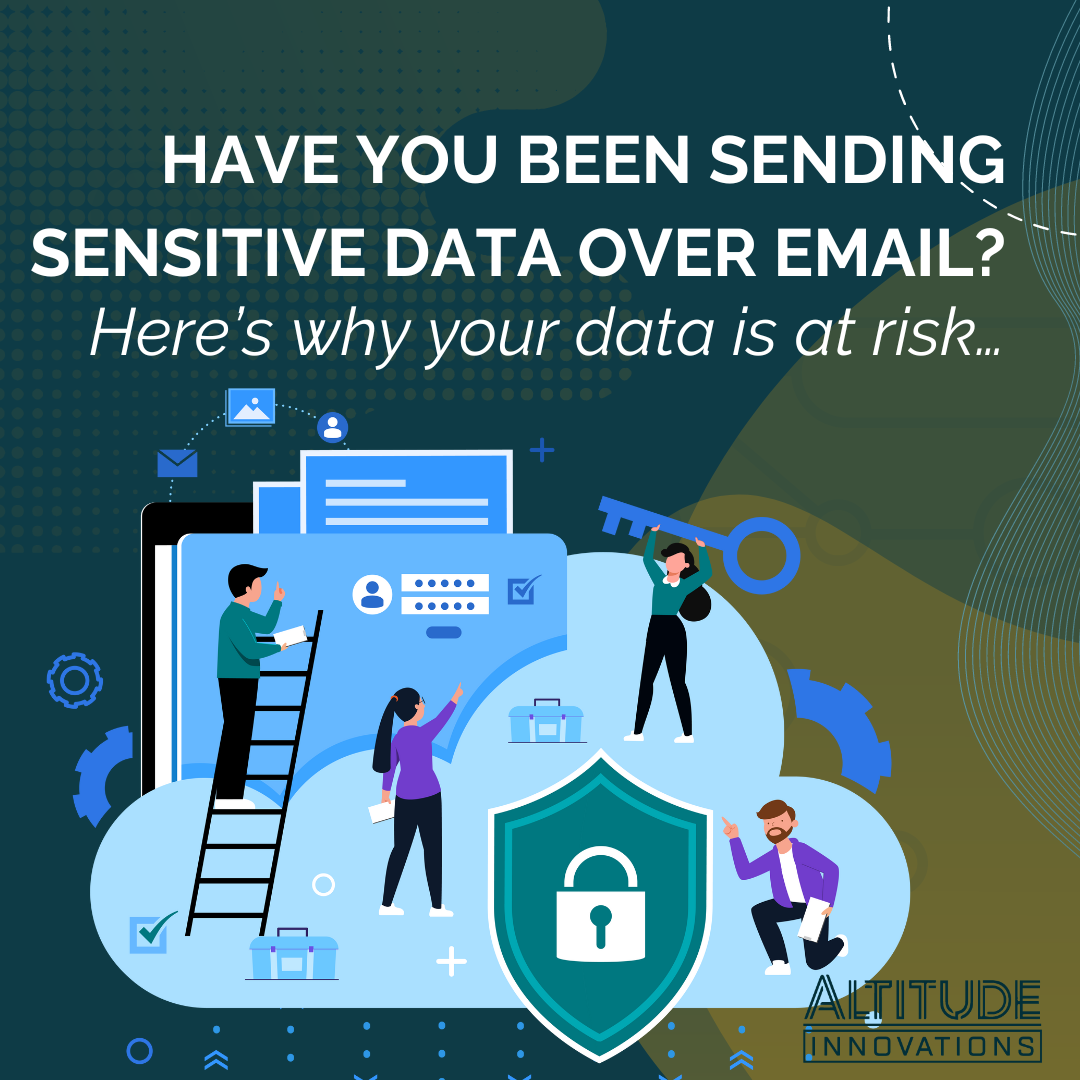Blog
Have you been sending sensitive data over email? Here’s why your data is at risk…

In today’s digital age, email has become an indispensable tool for communication, both personal and professional. However, with convenience comes risks, particularly concerning the security of sensitive information. As an email user, it’s crucial to understand the dangers of sending sensitive data via email and learn how to securely share such information to protect yourself and your organisation from potential cyber threats. Here’s something you should know before you decide to send an email that contains sensitive data.
Emails are not private.
Hackers can easily intercept emails containing sensitive data, such as financial information, personal identifiers, passwords, or intellectual property. This is because email lacks a feature called ‘encryption’ which makes data indecipherable to everyone except the intended recipient. A data breach from an email can lead to severe consequences, including identity theft, compromised accounts, financial loss, and reputational damage.
Cybercriminals often aggressively target email users into revealing sensitive information or clicking on malicious links. This is called “Phishing”. These attacks can compromise your email account, or the inbox belonging to the person you’re sending an email to, leading to further security breaches.
So how exactly does someone share sensitive information online if you can’t send it in an email?
The best way to avoid this is to use a more secure method of sharing your sensitive information. “Like what?” you ask, well here are some of the best alternatives:
File-Sharing Platforms: Whenever possible, you should avoid sending sensitive information in an email or email attachment. Instead, use secure file-sharing platforms or encrypted links to share files securely. SharePoint/OneDrive, Google Drive, and Dropbox are all examples of Storage Platforms which give you the option to securely share files by only allowing the intended recipient to access the link, meaning that the link won’t open unless the intended recipient is signed in.
Password Managers/Digital Vaults: When sharing any kind of login details or security questions, password managers are a fantastic option for securely sharing passwords with others. Keeper, LastPass, and NordPass are just a few of the many options to choose from. By utilising a tool like this, you can securely share a password with anyone that has permission to view those entries you specify in your digital password vault, and you won’t have to send anything over email or phone.
These are by far the best options and are what we recommend the most. In fact, while using these tools, the chances of your data being compromised can be reduced even more, by ensuring that both you and the intended recipient have enabled multi-factor authentication and have created a strong password when signing up for either a password manager or file-sharing platform.
Email/Attachment Encryption: Despite our recommendations against using email to send sensitive data, email encryption is a good way to avoid the typical security risks involved. This is because it scrambles the email message, making it unreadable to unauthorised users. You might also know that you can encrypt common attachments like PDF files too. The only problem is that you’ll need to make sure the recipient has a decryption key (like a password), so that they can un-encrypt the message or attachment. Which, unless you can tell it to them in person or privately over the phone, you’ll need to use one of the other options above to share that key securely, via a different method than the email you are sending. Only by performing this additional step will you ensure that the recipient can actually view the email/PDF that you’re sending them.
Now it’s your turn!
Now you are aware of the risks of sending sensitive data over email. The next time you want to share your sensitive info over email, remember these secure alternatives to protect yourself and your organisation from cyber threats. Don’t wait until it’s too late. Take these proactive steps today to safeguard your sensitive information and strengthen your cybersecurity defences.
Contact us at Altitude Innovations to learn more about how we can help protect your organisation from these sorts of sensitive data leaks and other cyber threats to ensure a secure digital environment for your business operations. Together, let’s make cybersecurity a top priority and build a safer online world.
Category
- Alerts & Advisories (10)
- Device Discussions (5)
- Software Solutions (10)
- Technology Tips (17)

